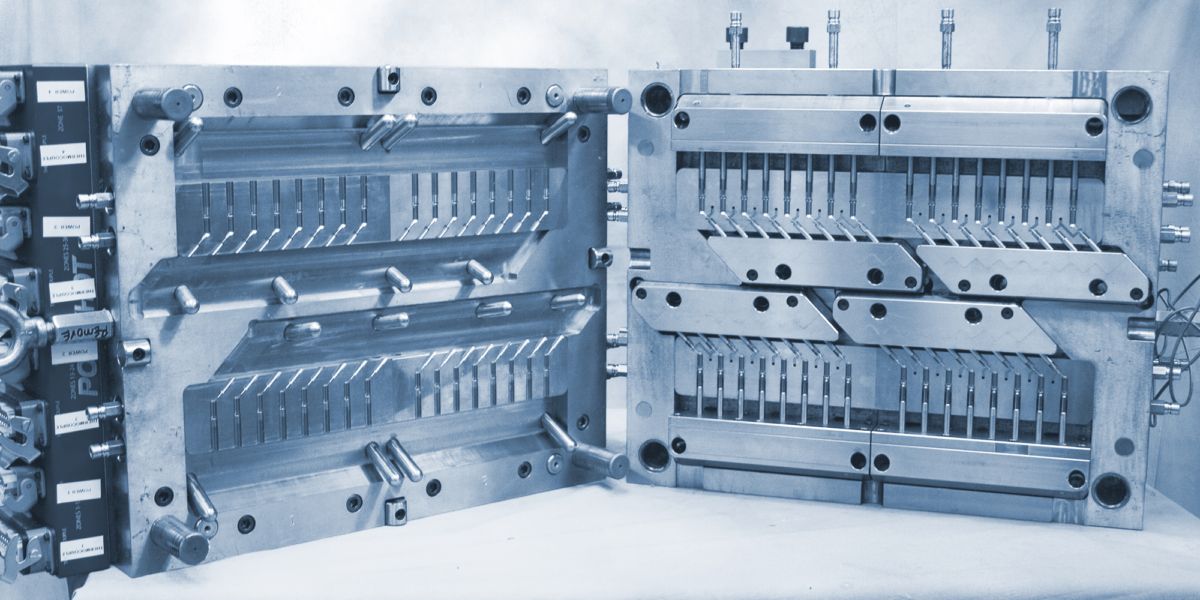
Impact and Effects of Tooling on Injection Molding
In all areas of manufacturing, success comes from paying attention to the details. In injection molding, one of those key details is precise, high-quality, well-designed tooling. The injection mold tool is the mold or die into which material is injected to form parts during the molding process. The impact of tools on injection molding cannot be understated. Tooling is a major investment that accounts for a large portion of a project’s budget and must be precise to guarantee high-quality output.
In this post, we’ll consider the aspects of injection molding tool design, how to ensure that tools are manufactured correctly, and why they are so important.Injection Molding Tool Design
While tool design is a key component of injection molding, numerous smaller details go into the design. They all add up to the effectiveness of the molding process in producing quality parts. Below, we’ll look at each aspect of tool design and the role it plays.
- Robust tool design — Injection mold tooling is not the place to skimp on upfront DFM (design for manufacturing) support to achieve a good design. The tool should be designed robustly enough so the opposite sides remain trued and aligned when the tool clamps shut. If it isn’t, an issue known as deflection may occur, in which the halves are not perfectly aligned. Not only does this affect the shape of the final product, but it also can create a flash problem in injection molding, where excess material is present in the final result.

- Proper injection mold venting — Tool vents are necessary to allow hot, compressed gases to escape from the mold cavities. If gas becomes trapped in the mold, several problems can occur. The gas may take up space where the resin was meant to go, leading to short-shot problems or cavities within solid areas. Gas also may force material out of the cavity, leading to flash. Finally, gas can become very hot if not vented, causing burn marks on the finished product and issues with injection molding cooling.
- Injection Molding Cooling - The cooling process is a time-consuming step in plastic injection molding and takes up to 75% of most cycle times. This is why developing the right cooling design is so important. Cooling lines need to be designed specifically for the part being molded. Thick areas of a part will take longer to cool and should have more aggressive cooling than thin areas. Cooling lines should be as direct as possible, with minimal branches and divisions to reduce pressure drop in the cooling system. Traditional cooling methods are similar to a heat ex-changer often with long tubes straight or U-shaped running through the mold to facilitate the cooling step. A new alternate approach is conformal cooling where the cooling channels closely follow the shape of the component being produced. Conformal cooling has higher initial tooling costs but provides better cooling efficiency and lower cycle times.
- Sprue selection — The sprue is the piece of the mold that connects to the nozzle that delivers liquid plastic material. There are different types of sprue in injection molding, which are lettered A, B, C, D, and E. The sprue is selected to account for the material properties of the resin in use, the type of molding machine, the pressure required, and other specifics.
- Gate number and location — The gate delivers the molten resin into the cavity after it is injected through the sprue and has traveled through the mold runners. Sufficient gating should be present to ensure the cavity is quickly and smoothly filled. Gates also should be located to ensure proper flow and complete filling.
Without a sound, carefully considered design, the success of an injection molding project can be compromised right from the start. Not only must the mold be strong and accurate, but each essential detail must be properly placed and designed to ensure that every step of the process works as it should. As a significant time and cost investment, the tool should also be long-lasting and suitable for repeated use.
Crescent Industries provides industry-leading injection molding services, including tooling design and fulfillment. We work with you to understand every aspect of the project. We not only ensure a successful design but also possess capabilities, such as mold inserts, that can make one mold suitable for a range of products. This saves you the time and expense of a brand-new mold for every project. To learn how we can work with you to meet your requirements, contact us today.
Linked URLs:
https://crescentind.com/tooling/
https://crescentind.com/contact-us/
Resources:
https://www.ptonline.com/articles/tooling-the-tools-impact-on-the-molding-process
https://www.creativemechanisms.com/blog/everything-you-need-to-know-about-injection-molding https://crescentind.com/tooling
Topics:
Related Articles
-
May 12, 2025
The Role of Hot Runners in Injection Molding
Read MoreBefore the invention of hot runner systems, manufacturers used cold runner injection methods. These...
-
Apr 23, 2025
How Long Does an Injection Mold Last? | Durability Factors
Read MorePlastic injection molds can manufacture custom parts in numerous industries with great accuracy and...
-
Apr 10, 2025
How Are Injection Molds Made for Plastic Manufacturing?
Read MoreDo you have a part design and need an injection mold built? Are you interested in finding a tooling...

